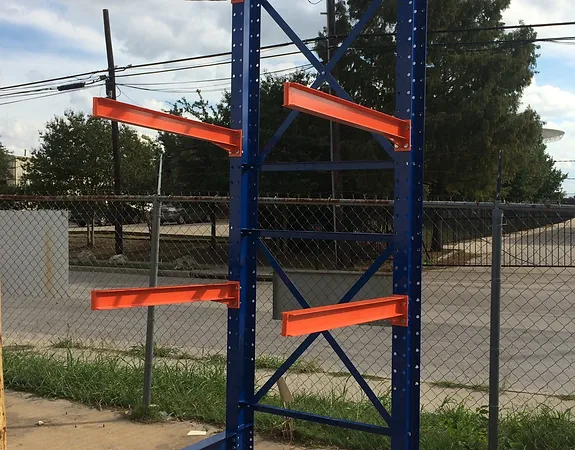The demand for sustainable practices is growing in every industry, and warehousing is no exception. As businesses look for reducing their environmental impact, the importance of choosing eco-friendly options for warehouse racking installation becomes clear. Each industry has unique needs and challenges, which means that one-size-fits-all solutions rarely work. Let’s explore how different sectors can adopt sustainable racking solutions tailored to their specific requirements.
The Retail Industry: Optimizing Space and Energy Efficiency
Retail warehouses face the challenge of storing diverse products and handling high turnover rates. This sector often needs flexible and adaptable racking systems that can accommodate a variety of product sizes and types.
Sustainable warehouse racking installation in retail can involve using adjustable shelving and modular designs, which not only save space but also reduce the need for frequent reconfigurations.
In addition, selecting eco-friendly materials, such as recycled steel or sustainably sourced wood, can significantly lower the carbon footprint of these racking systems. By opting for energy-efficient lighting and HVAC systems, retailers can further enhance the sustainability of their warehouses. These practices contribute to environmental conservation and it also result in saving expenses in the long run.
The Manufacturing Sector: Durability and Environmental Compliance
Manufacturing warehouses often handle heavy loads and require durable storage solutions. This sector can benefit from sustainablewarehouse racking installation by choosing materials that are both strong and environmentally friendly. Recycled metal and other sustainable composites can provide the necessary strength without compromising on environmental impact.
Another critical aspect for manufacturing is compliance with environmental regulations. Implementing racking systems that meet these standards not only helps in maintaining compliance but also positions the company as a responsible business leader. Additionally, the use of refurbished racking systems can extend the lifespan of materials, further reducing waste and promoting sustainability.
The Logistics and Distribution Industry: Flexibility and Scalability
Logistics and distribution centers are dynamic environments where inventory levels and product sizes can change frequently. For this industry, sustainable warehouse racking installation means investing in systems that are both flexible and scalable. Racking solutions that can be easily adjusted or expanded allow these facilities to adapt quickly to changing demands.
Moreover, integrating technology such as smart sensors and automated systems can optimize space utilization and improve energy efficiency. By reducing the time and resources needed to manage inventory, these technologies also contribute to a greener operation. The logistics industry stands to gain significantly from sustainable practices, both in terms of operational efficiency and environmental responsibility.
Key Considerations for Sustainable Warehouse Racking Installation Across Industries
When it comes to installing racking systems in warehouses, sustainability is a growing concern across various industries. One primary aspect to consider is the choice of materials. Consider eco-friendly options, like recycled steel or bamboo, that can considerably reduce the environmental impact of your racking systems.
Another important factor is the entire lifecycle of the racking systems, from installation to removal.
You can also consider fostering a culture of sustainability among your employees through education on eco-friendly practices. This can create a more responsible workplace.
Overcoming Common Challenges in Implementing Sustainable Racking Solutions
Adopting sustainable warehouse racking installation can come with its own set of challenges, such as higher upfront costs or space constraints. However, these hurdles can often be addressed through careful planning and innovative design approaches. For instance, conducting a cost-benefit analysis can help justify the initial investment by highlighting the long-term savings in energy and maintenance costs.
Moreover, companies can explore modular and scalable solutions that fit their space requirements without compromising sustainability. Engaging with suppliers who specialize in eco-friendly materials and practices can also ease the transition to more sustainable racking systems. It’s all about finding the right balance between functionality, cost, and environmental impact.
The Future of Sustainable Warehouse Racking Installation: Trends and Innovations
The future of warehouse racking installation is positive and promising, with many trends and innovations. More businesses are understanding the importance of renewable materials like bamboo and bioplastics as eco-friendly alternatives.
You will also find that advancements in automation and smart technology are set to change how warehouses operate. These innovations will make operations more efficient while also being kinder and more understanding towards the planet.
The best part of these eco-friendly materials is that they are more than just about environmental advantages. They also provide operational advantages as these can enhance a company’s bottom line. As a business, you can place yourself as an industry leader just by choosing eco-friendly materials as you can demonstrate how innovative your business is.
Conclusion
Sustainable warehouse racking installation is more than just a trend; it’s a necessary step towards a greener and more efficient future. Whether you’re in retail, manufacturing, or logistics, adopting industry-specific sustainable solutions can lead to significant environmental and economic benefits.
For those seeking reliable and eco-friendly options, consider companies like Upright Installations, Inc. It offer a wide range of premium new and used warehouse storage solutions, from pallet racks to mezzanines, and more.
The company’s services include not just delivery and installation but also removal, layout planning, permitting, and refurbishing. By choosing providers committed to sustainability, you can ensure that your warehouse operations are not only efficient but also environmentally responsible.

